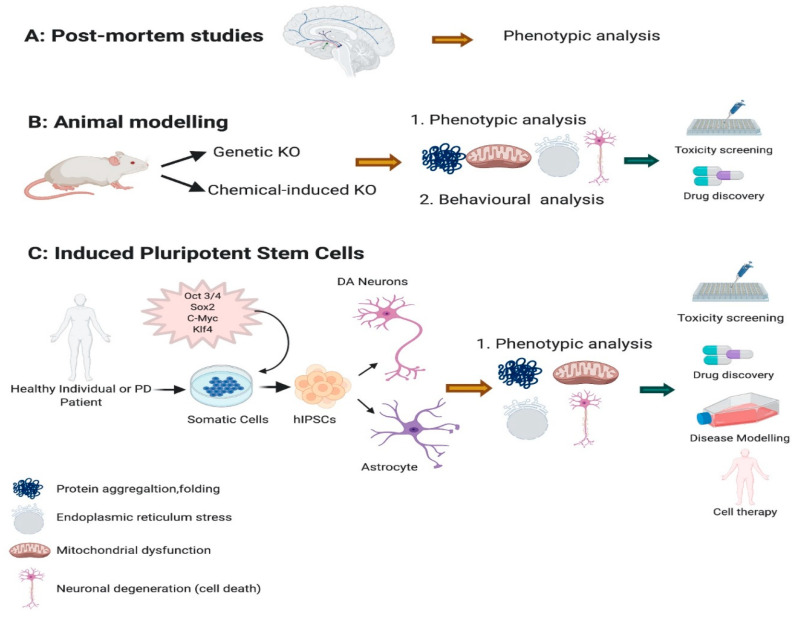Figure 1.
Parkinson’s disease (PD) modelling. PD have been modelled and studied using post-mortem (A) tissues derived from PD. (B) Animal models have been vastly used both by knocking down specific gene or with use of chemicals. This help researchers to investigate the associated phenotypes such as mitochondrial dysfunction, neuronal degeneration and protein folding and aggregation for creating an efficient animal model and use in drug discovery and toxicity. (C) Novel induced pluripotent stem cells have been derived from somatic cells of a PD or a healthy individual, leading to generate a disease model in a dish where different phenotypes can be investigated and pave the way towards drug discovery, toxicity testing and cell therapy interventions.

